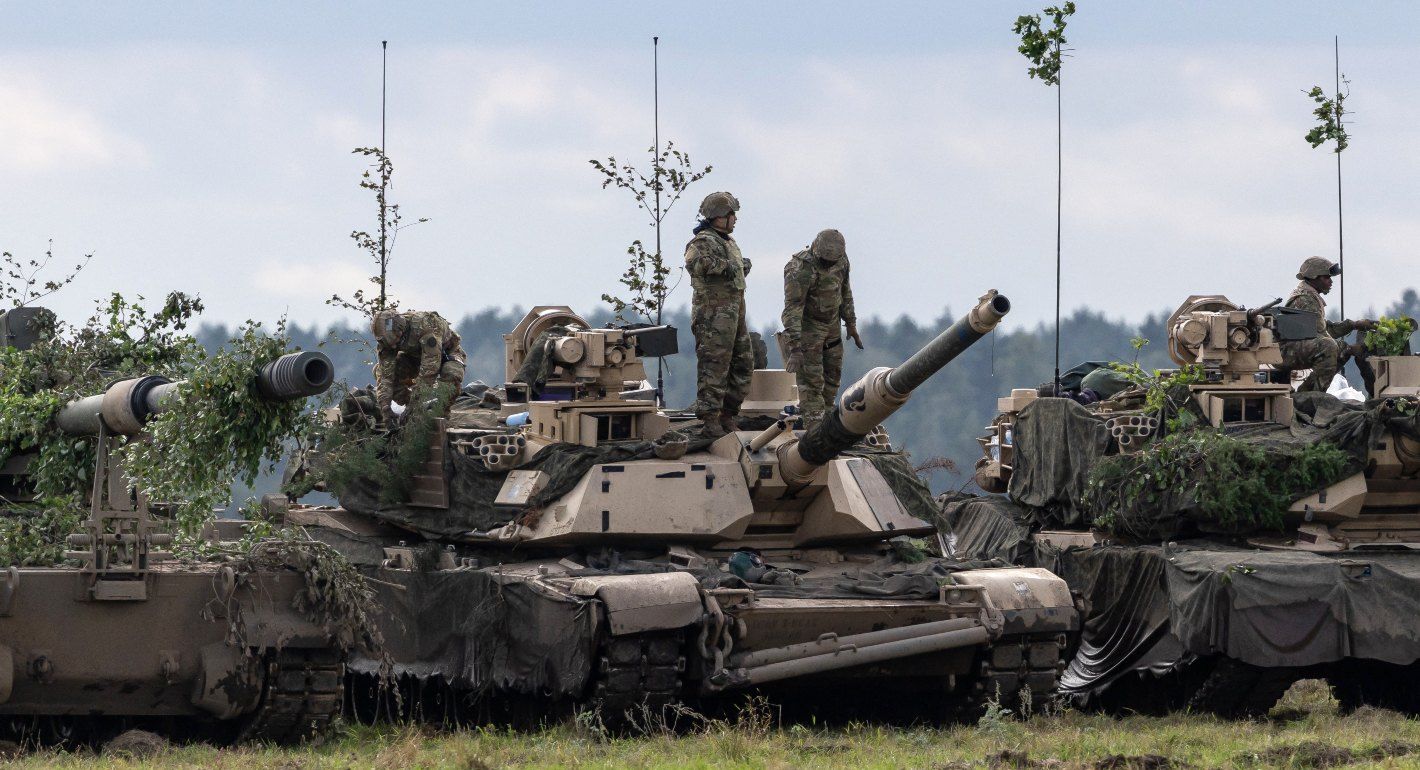With the return of U.S. President Donald Trump to the White House, Europeans worried about a dormant NATO or worse, a U.S. withdrawal from the alliance. There is a case to be made that the current situation is even worse than these doomsday scenarios.
Trump and his team said enough of the right things to allow many European leaders to lull themselves back into complacency. But a factual detached assessment of the U.S. administration’s actions since January paints a picture that should be keeping European security and defense officials up at night.
Russia crossed a new threshold over the past two weeks with its drone and fighter jets incursions into Polish and Estonian NATO airspace. These overt military violations have suspiciously coincided with severe simultaneous disruptions at major European airports. NATO’s response wasn’t just paltry; it was accompanied by Trump statements that suggest the clearly deliberate violations by Moscow were “a mistake,” inviting more Russian aggression instead of deterring it.
NATO’s failure to dissuade Russia from even contemplating such violations may turn out to be a fateful moment for Europe and the alliance. The imperative to correct course, recover deterrence, and control escalation dominance has never been more urgent.
It was striking how low alliance officials set the bar for themselves in light of these incidents. NATO defenses shot down a mere four Russian drones out of nineteen, and officials seemed to be content with repelling Russian warplanes after the fact. The message to Russian President Vladimir Putin could not be more problematic, especially after the allies spent three years imposing all sorts of restrictive measures on Ukraine and themselves out of constant fear of provoking Russia.
The Polish Foreign Minister Radosław Sikorski made a startlingly revealing statement on Monday, September 22 at the United Nations Security Council. “We are peaceful democracies who have studiously avoided actively joining your attempt to conquer Ukraine” he said. He then added “But we will not be intimidated. […] If another missile or aircraft enters our space without permission, deliberately or by mistake, and gets shot down and the wreckage falls on NATO territory, please don’t come here to whine about it. You have been warned.”
While a worthy and necessary attempt to project deterrence, this statement rings hollow for now given it has not been backed by effective strategic action from NATO.
The inability of Europeans to turn their nearly yearlong discussions about a possible reassurance force in Ukraine undermines most of their efforts to end the war. The choice of calling the potential European force, a “reassurance” force betrays their hesitations.
Add to that the continued difficulties of the European defense industrial landscape to consolidate, standardize, and scale itself up, despite notable breakthroughs on financing like the SAFE mechanism. This is another signal of lack of serious commitment to a war that, in reality, is already being fought against them. The latest chapter in the Franco-German dysfunctional forced marriage to produce the fighter jet of the future, with trial balloons in Germany about dropping the French partner, only further weaken the signaling.
Instead of dedicating all their political, financial, and industrial efforts to build up the capacities needed to become more credible, Europeans diverted scarce time and resources over the past few months working on keeping the United States on their side. They convinced themselves they had kept Washington engaged, at least within NATO. Then, they built the rest of their efforts on that erroneous baseline. But now Europeans have found themselves not only bearing full responsibility for the non-NATO Ukraine battlefield, but also dealing with one of the gravest challenges to the security of the alliance’s Eastern Flank, with an America that has been increasingly ghosting them.
Away from the backslapping and obsequious fawning since May, on all indicators, the United States has weakened Ukraine and Europe’s hand in the ongoing confrontation over European security.
Washington suspended crucial intelligence sharing to force Kyiv to negotiate in a weakened state. It stopped U.S. direct financial support for Ukraine. It slow rolled already appropriated weapons, and even cancelled some deliveries. Trump and his team verbally assaulted Ukrainian President Volodymyr Zelensky in their first Oval Office meeting, while a few months later they rolled out the red carpet for Ukraine’s aggressor Vladimir Putin in Alaska.
U.S. officials contest any accusations of softening their stance toward Russia by pointing out that they have not suspended or lifted any of the sanctions imposed on Moscow by the former president Joe Biden’s previous administration. While factual, what they have not done is taken any action to compel Putin to stop the war in Ukraine. For a Trump administration that prides itself on a disruptive diplomatic style and on breaking with everything the Biden administration has done, the continuity is telling.
Setting aside style, the Biden era policies were only marginally better in light of the AUKUS partnership, the Inflation Reduction Act, and overly cautious management of the war in Ukraine based on self-deterrence instead of deterring Russia.
A dormant NATO or a U.S. withdrawal from the alliance would have been catastrophic because it would have immediately created vital capacity vulnerabilities. But at least it would have been a clarifying moment that Europeans couldn’t delude themselves out of facing. The current situation’s ambiguity with the U.S. stance is proving more and more dangerous as the days go by.
Europeans, of course, should be wiser by now. But they still haven’t internalized the profound recalibration of American posture away from Europe after Trump’s first term and Biden’s presidency. This proves just how addicted Europeans are to the American security guarantee, despite their wealth and power.




